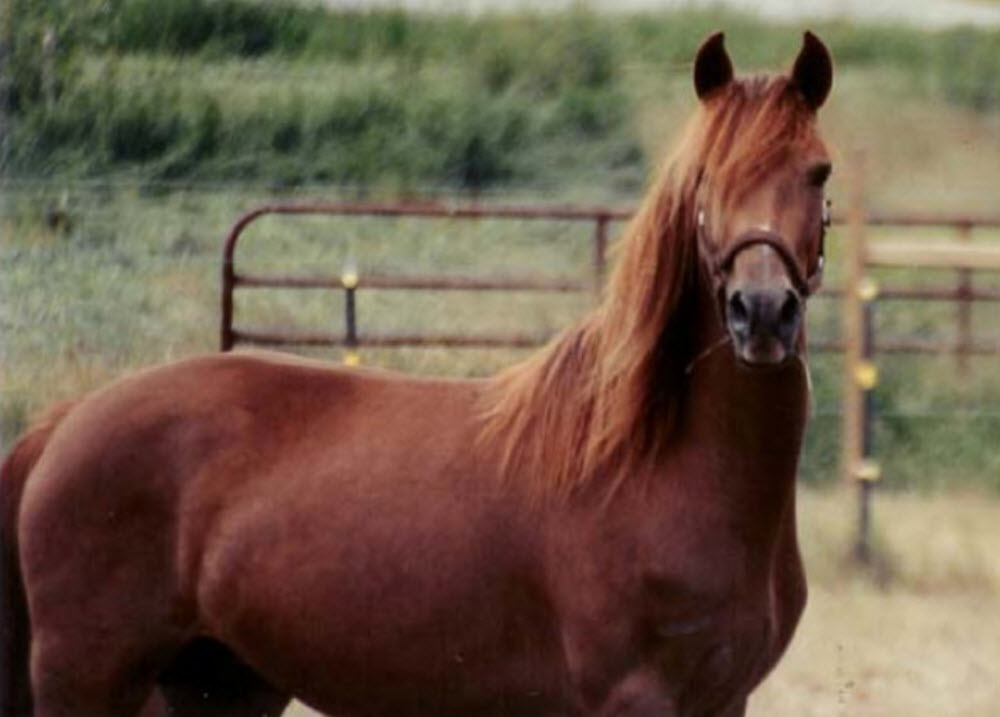On this page:
The Morgan horse is one of the earliest breeds developed in the United States. Its foundation sire was a small bay stallion named Figure, born in Massachusetts in 1789. Later, the horse’s name was changed from Figure to Justin Morgan in honor of his best-known owner. The foundation mares were from the now-extinct Narragansett Pacer breed.
Often hailed as America’s first breed, the Morgan Horse boasts a rich history. This uniquely versatile breed’s intriguing narrative forms a fundamental part of America’s equine heritage. Morgan horses have, for instance, been used extensively as coach horses, military horses (including cavalry), harness racing horses, and general all-round riding horses. Morgan horses have also influenced several other notable breeds, including the American Quarter Horse and the Tennessee Walking Horse.

Resilient, versatile, and spirited, the Morgan Horse continues to prevail as one of America’s most celebrated native breeds. Its charm, beauty, and enduring spirit reflect the pioneering ethos of the days it was born into. From its humble beginnings as Justin Morgan’s prized horse, the Morgan breed has permeated the fabric of America’s equine landscape, continuing to be a beloved favorite for horse enthusiasts across the nation. Remarkably adaptable yet consistently retaining its unique identity, the Morgan horse is testament to the enduring strength and spirit of America’s equine heritage.
Still, the future of the Morgan horse breed is facing serious obstacles due to crossbreeding. As of 2019, is is estaimted that only about 100 foundation Morgan horses remain, due to extensive crossbreeding – especially with Saddlebred and Arabian horses.
Description
The Morgan Horse has a robust, compact body, usually standing between 14.1 and 15.2 hands high. They possess a strong head, wide eyes, and an expressive face.
The most common colors are bay, black or chestnut, but many other colors exist in the breed, including several versions of pinto.
Temperament and use
Known for their elegance, athleticism, and hardworking nature, Morgan Horses possess an exceptional blend of versatility, strength, and personality. While they are widely admired for their physical attributes and versatility, what makes the Morgan Horse truly unique is its remarkable disposition. These horses are known for their kindness, intelligence, willingness to work, and adaptability.
Morgan Horses are friendly, people-oriented animals that are easy to handle and train. They are also very agile and brave, showing exceptional aptitude across a wide variety of disciplines. Whether it be Western or English riding, driving, trail riding, or competitive show circuits, the Morgan Horse’s boundless spirit and exceptional willingness to please make it a joy to work with. Morgan horses have performed well in many different disciplines and lines of work, including show jumping, dressage, cutting, endurance riding, combined driving, carriage driving, therapeutic riding, and Western pleasure. In the United States, they are a popular choice for Pony Clubs and similar activities for children.
This was the first U.S. breed to compete in the World Pairs Driving competition, representing the U.S.
Shows
Morgan-only shows are held throughout the United States. The first Grand National and World Championship Morgan Horse Show took place in Detroit in 1973. Since 1975, it has been held in Oklahoma City.
History
The founding sire “Figure” (later renamed Justin Morgan) was born in Springfield, Massachusetts in 1789. This compact horse turned out to possess an impressive amount of strength, speed, and endurance. It was under the ownership of music teacher Justin Morgan that Figure became the founding sire for the Morgan Horse bree.
No other U.S. breed can trace its lineage back to a single sire as clearly as the Morgan can. As the popularity of Morgan Horses grew, they began to permeate virtually all aspects of American life, becoming renowned cavalry horses, stagecoach horses, and family companions.
During the 1800s, export of the Morgan Horse commenced, with Morgan horses being sent to other parts of the world, including England where the breed influenced the Hackney horse breed.
The first breed registry for the Morgan Horse was not created until 1909. Two years earlier, the United States Department of Agriculture had established the US Morgan Horse Farm near Middlebury in Vermon to promote and improve the Morgan breed. Later, control of the farm was transferred to the University of Vermont.
Culture
- The Morgan horse is the state horse of Massachusetts, the state mammal or Rhode Island, and the state animal of Vermont. (Rhode Island is the state of origin for the Narragansett Pacer, a now-extinct breed that contributed a lot of genetic material to the Morgan horse.)
- “Justin Morgan Had a Horse” is a children’s book by Marguerite Henry, published in 1945. The book was later adapted into a Disney movie, which premieered in 1972. Both the book and the movie are largely fictional and diverge pretty far from the historical events that inspired them.
- The children’s author Ellen Feld created a Morgan Horse book series, which includes titels such as “ Blackjack: Dreaming of a Morgan Horse” and “ Frosty: The Adventures of a Morgan Horse”.
- Four-time Pulitzer Prize winner Robert Frost wrote the poem “The Runaway”, where the speaker notices a little Morgan colt who has been left out in a mountain pasture during the snowy winter.
Influence on other breeds
The influence of the Morgan Horse is undeniable; they not only formed an integral part of America’s pioneering days but also played a significant role in the establishment of other American horse breeds. The Morgan breed contributed its desirable characteristics to many other breeds, including the Standardbred, American Saddlebred, and Tennessee Walking Horse.
